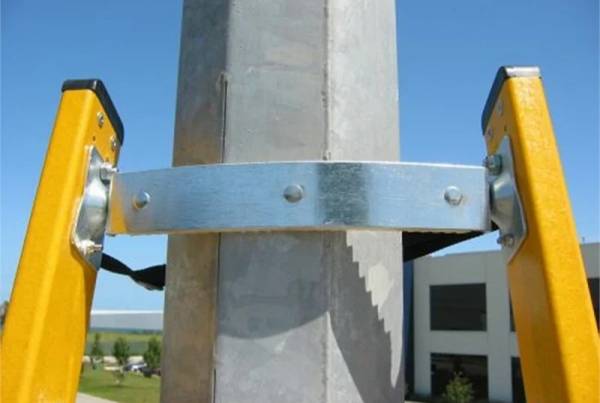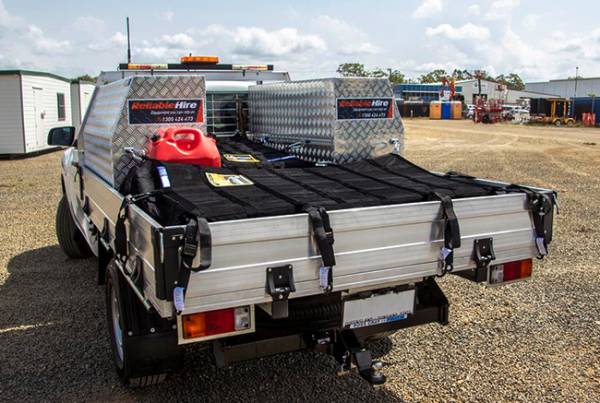Australian Laws on Securing Your Load
You must secure both private and commercial vehicles using a security cargo net in Queensland. By law, you will be fined upwards of $200 if you are found without a net on your ute if you are transporting any goods or cargo.
The purpose of these regulations is to ensure that any load does not move or has limited movement while you drive. This is to prevent potential risks on the road, which — if your load is dislodged — can cause severe harm to you or people driving near you. This principle is applicable both to open beds and closed vehicles.
Understanding Transport Regulations and Measurements
There are several capacity measurements you must comply with in order to follow the law. These will be posted as part of the manual for your vehicle itself. To learn more about these regulations and measurements, find resources from the National Transport Commission.
Maximum Width, Height, and Length
These are the measurements of the space you can use to carry goods.
Load Projections
Load projections are the amount you are allowed to have overhanging from the sides of your vehicle. This is especially relevant for bulky or oddly shaped items.
Weight Requirements
This is the maximum weight your vehicle is able to carry, including the weight of the passengers and all goods in the car. This is called the “payload” and is the difference between an un-laden vehicle and one with goods on it. If you don’t know how much your goods weigh, you should consider using a scale to make sure you don’t exceed the weight of your vehicle. If you do exceed it, you risk damage to your vehicle and are more likely to break down on the road.
Acceleration tests
To ensure your load fits the requirements, it should not have a risk of dislodgement with the following acceleration tests:
- 0.8 g deceleration in a forward direction,
- 0.5 g deceleration in a rearward direction,
- 0.5 g acceleration in a lateral direction, and to
- 0.2 g acceleration relative to the load in a vertical direction.
What You Need to Comply With
Following the safety regulation and complying with the law is not difficult, but takes a couple of steps.
- Secure all goods with a safety net with sufficient load capacity
- Do not obstruct your headlights or backlights
- Add reflectors if you are transporting goods at night
- Add a yellow, yellow/red, or red flag to the extreme back of your vehicle, so it is visible to the person driving directly behind you
By following the above you will avoid a fine and help ensure the safety of you and other drivers on the road.
For competitively priced professional grade safety cargo nets, visit our online store or one of our four Queensland locations.
H1: Australian Laws on Securing Your Load
You must secure both private and commercial vehicles using a security cargo net in Queensland. By law, you will be fined upwards of $200 if you are found without a net on your ute if you are transporting any goods or cargo.
The purpose of these regulations is to ensure that any load does not move or has limited movement while you drive. This is to prevent potential risks on the road, which — if your load is dislodged — can cause severe harm to you or people driving near you. This principle is applicable both to open beds and closed vehicles.
H3: Understanding Transport Regulations and Measurements
There are several capacity measurements you must comply with in order to follow the law. These will be posted as part of the manual for your vehicle itself. To learn more about these regulations and measurements, find resources from the National Transport Commission.
H4: Maximum Width, Height, and Length
These are the measurements of the space you can use to carry goods.
H4: Load Projections
Load projections are the amount you are allowed to have overhanging from the sides of your vehicle. This is especially relevant for bulky or oddly shaped items.
H4: Weight Requirements
This is the maximum weight your vehicle is able to carry, including the weight of the passengers and all goods in the car. This is called the “payload” and is the difference between an un-laden vehicle and one with goods on it. If you don’t know how much your goods weigh, you should consider using a scale to make sure you don’t exceed the weight of your vehicle. If you do exceed it, you risk damage to your vehicle and are more likely to break down on the road.
H4: Acceleration tests
To ensure your load fits the requirements, it should not have a risk of dislodgement with the following acceleration tests:
- 0.8 g deceleration in a forward direction,
- 0.5 g deceleration in a rearward direction,
- 0.5 g acceleration in a lateral direction, and to
- 0.2 g acceleration relative to the load in a vertical direction.
H3: What You Need to Comply With
Following the safety regulation and complying with the law is not difficult, but takes a couple of steps.
- Secure all goods with a safety net with sufficient load capacity
- Do not obstruct your headlights or backlights
- Add reflectors if you are transporting goods at night
- Add a yellow, yellow/red, or red flag to the extreme back of your vehicle, so it is visible to the person driving directly behind you
By following the above you will avoid a fine and help ensure the safety of you and other drivers on the road.
For competitively priced professional grade safety cargo nets, visit our online store or one of our four Queensland locations.



